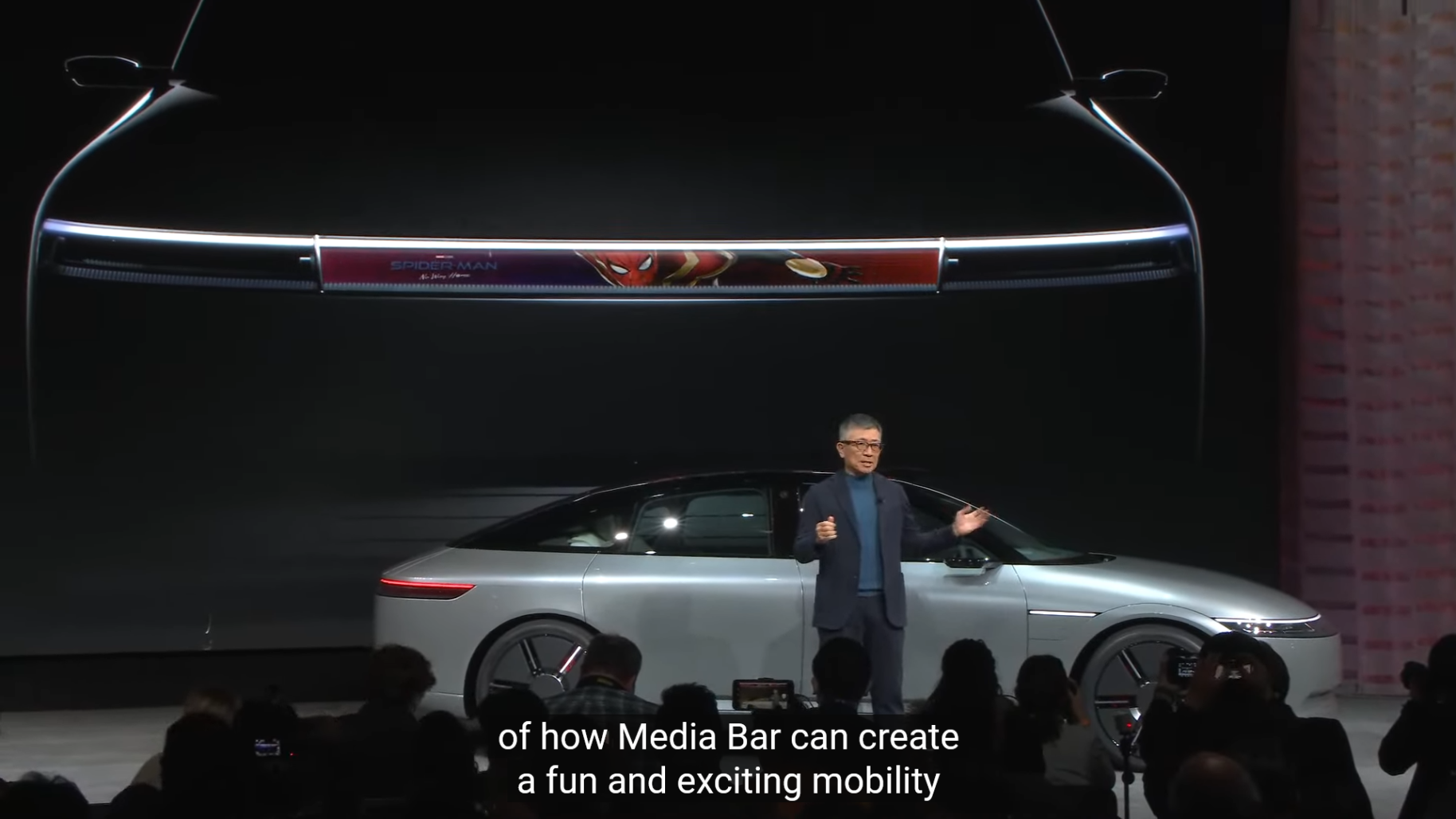Watching Sony’s CES 2023 presentation, I listened patiently as Yasuhide Mizuno spoke about the company’s vision for the future of mobility. He spoke about the three “A’s”—autonomy, augmentation, and affinity—which, he said, would revolutionize the way people move.
Autonomy would provide new safety experiences. Augmentation would turn vehicles into entertainment hubs. Affinity would allow cars to harmonize with people and contribute to society.

Then came Afeela, a new electric vehicle brand set to launch in 2026. As the prototype rolled out, sleek and futuristic, Mizuno introduced a feature called the Media Bar—a digital panel on the front of the car that “expresses itself by sharing various types of information to people around it.”
In other words: your car becomes a screen.
And what was this screen showing during the presentation? An ad for Spider-Man: No Way Home.
That’s when something clicked. This isn’t just about mobility. It’s about monetizing every inch of space we have left—including the front of your car.
What are we actually buying?
The implications are hard to ignore:
- Do we need more visual noise on the road? We’re nowhere near full self-driving adoption. Turning cars into moving billboards introduces unnecessary distractions where we least need them—between the headlights.
- Who controls the data? With 45 sensors mounted around the car, who has access to the information these vehicles gather—and what are they doing with it?
- Who pays for the ads? If you’re already buying the car, are you also subsidizing the display of ads? Is it eating into your battery life? What happens if the Media Bar malfunctions—or worse, gets hacked?
As a consumer, I struggle to understand who this feature is for. While Epic Games CTO Kim Libereri called the Afeela a “next-generation destination for social connectivity,” I’m not looking for my car to be social. I just want it to be safe and reliable.
From mobility to monetization
This isn’t just about Sony. It’s about a growing trend where more companies see vehicles not as tools for transportation—but as untapped platforms for digital engagement, advertising, and data collection.
We used to ask what a car could do. Now we need to ask what a car wants from us.
The road ahead
Tech companies often frame these advancements as innovation. But if the future of driving means turning every surface into an ad opportunity, we should take a step back and ask: who really benefits?
Before we hand the steering wheel over to corporations, we should ask who’s driving—and whether the destination is one we actually want to reach.
📌 Changelog
- April 6, 2025: Article re-written to focus on advertising and privacy.
- August 26, 2024: Edited article formatting. Fixed broken link.
- Jan 5, 2023: Original article posted.






